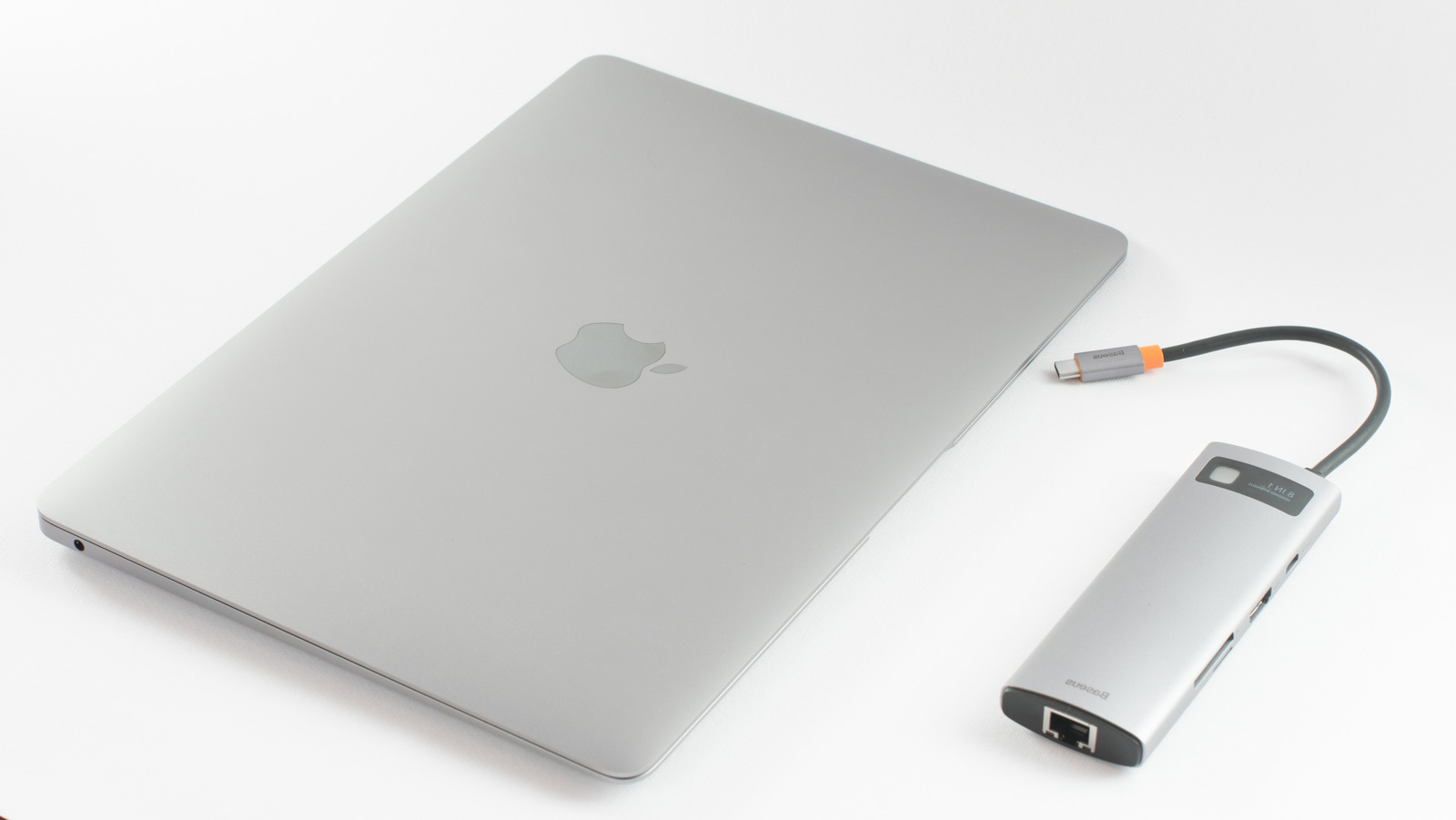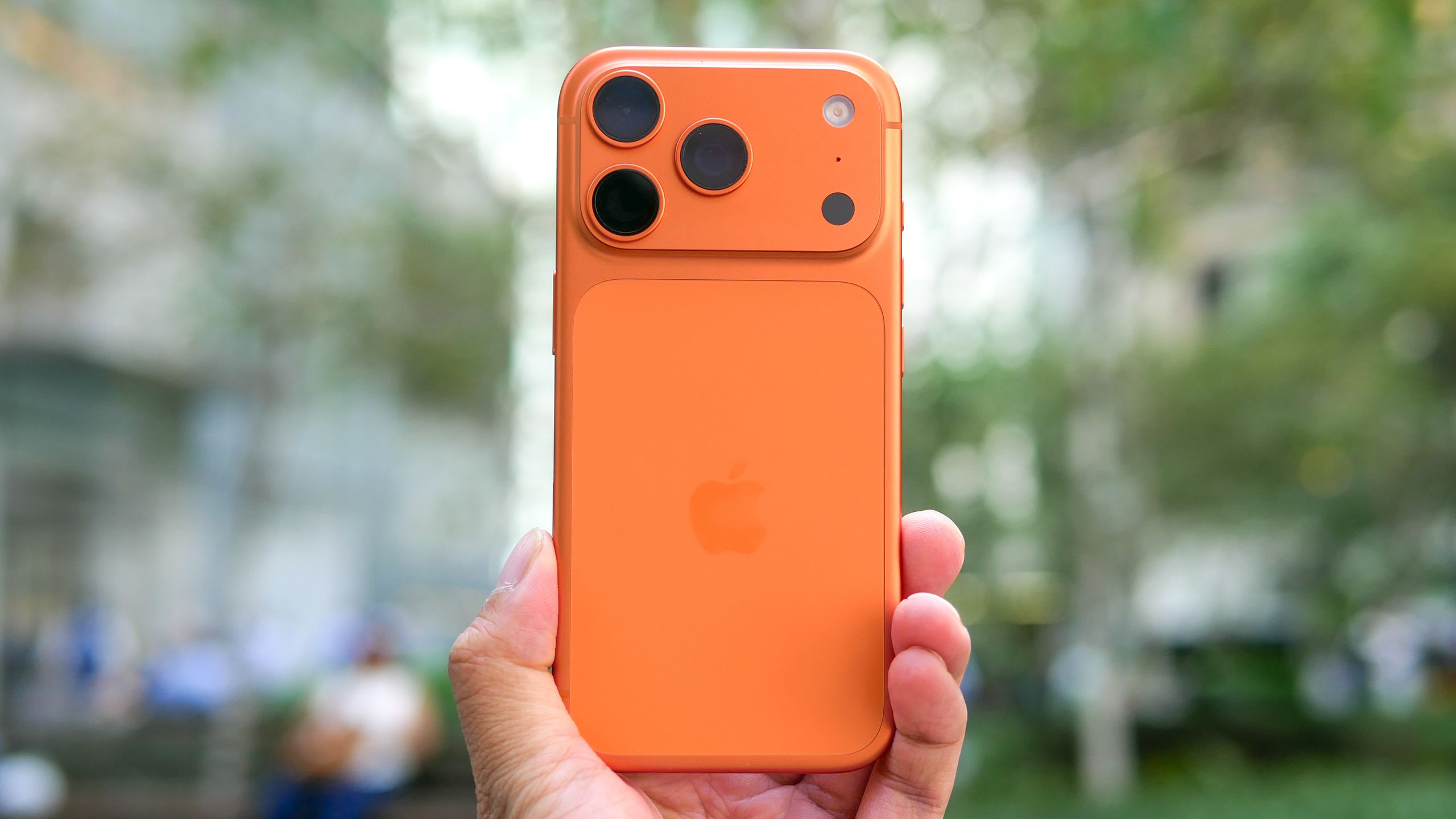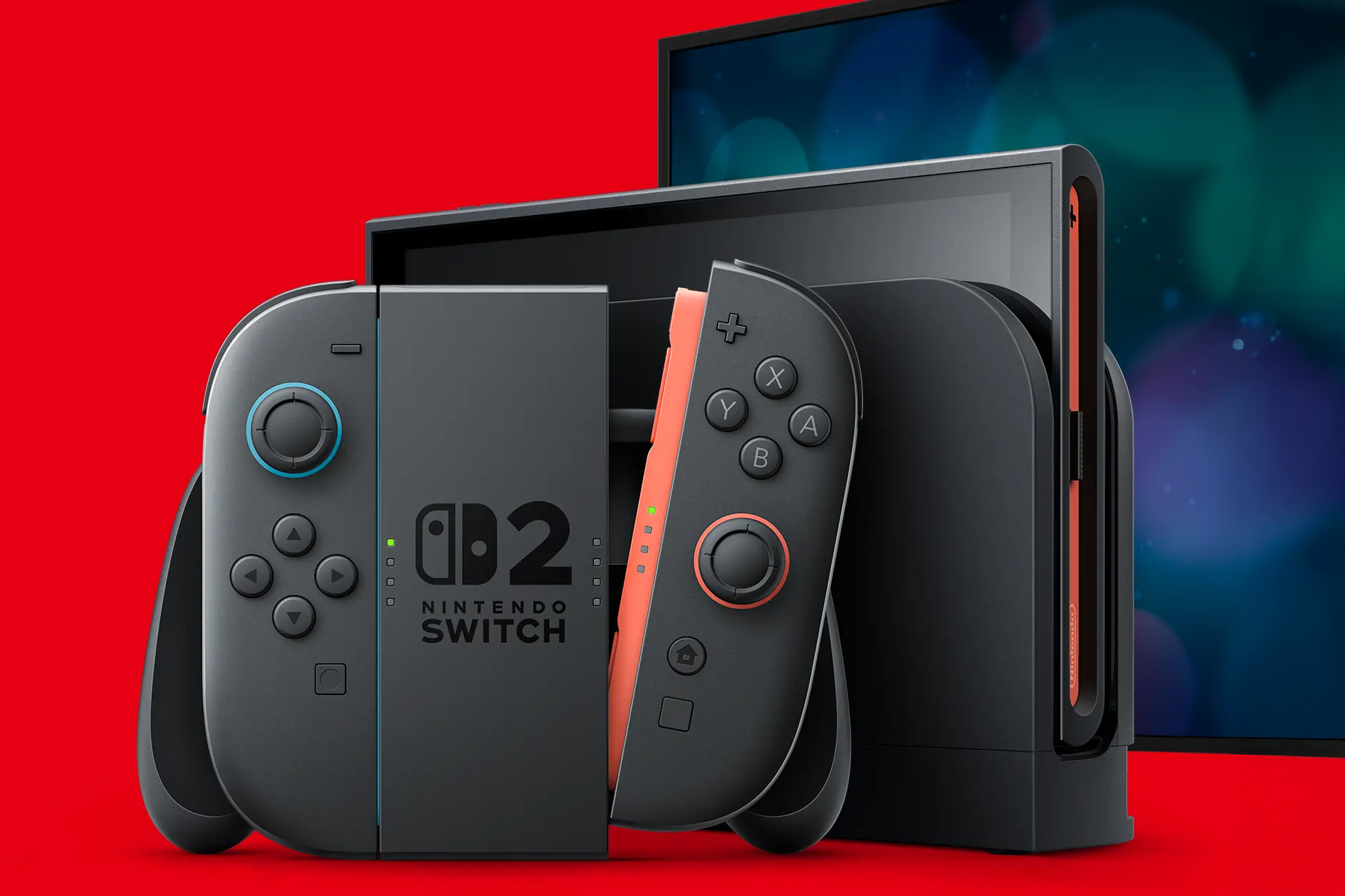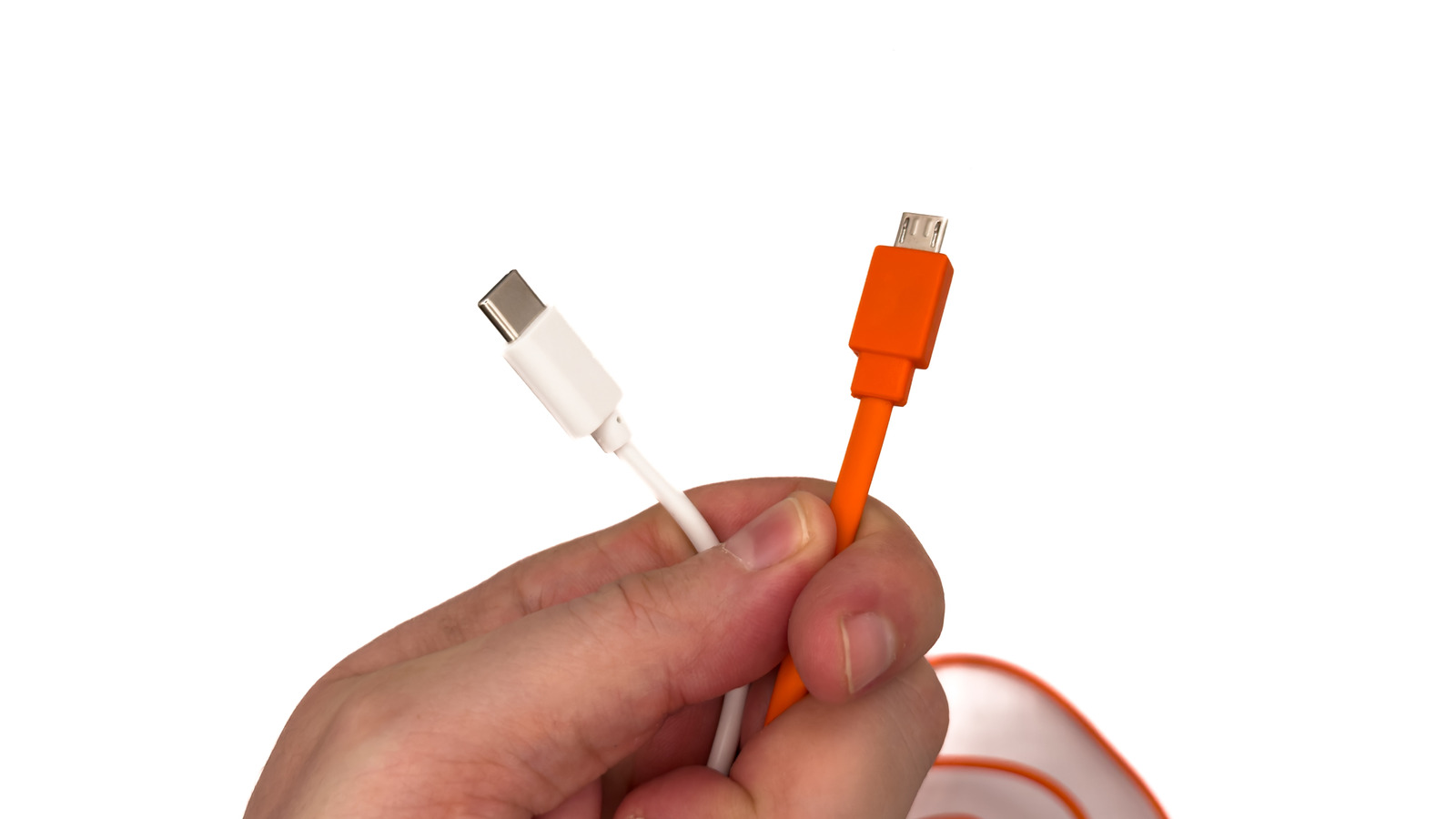We may receive a commission on purchases made from links.
With the latest generation of MacBooks, Apple has completed the transition to the jack-of-all-trades USB-C port. USB-C is now the standard (and often the only) port for major connectivity. Apple’s shift reflects a broader move in the tech world toward a unified high-speed connector that can handle everything from charging and data transfer to video output and audio. It’s not just about the cleaner design look. USB-C can replace almost every traditional port, including HDMI, USB-A, Ethernet, SD card slots, and even the 3.5mm audio jack.
That said, USB-C isn’t just a replacement for older ports: It’s a multifunctional standard that can do far more than most users realize. If you’re relying on USB-C only for charging or the occasional dongle, you’re missing out. With the right accessories, you can expand your MacBook’s capabilities, from faster data transfers to external displays, high-quality audio, and seamless travel solutions. Here are some of the most useful USB-C gadgets we recommend.
External SSD
One of the biggest limitations MacBook users face, especially with entry-level models, is internal storage. While Apple’s SSDs are fast and reliable, they’re also expensive to upgrade, and you’re usually locked into whatever size you choose when you order your MacBook. That’s where a USB-C external SSD becomes essential. It offers high-speed, portable storage that can match or even rival internal performance. External SSDs are incredibly easy to use and highly affordable these days.
Especially for photographers, video editors, and developers working with large files, they’ll benefit the most from buying a large 4 TB external SSD without breaking the bank. Thanks to USB-C’s high transfer speeds, external drives can reach read/write speeds over 1,000 MB/s, enabling quick file transfers, real-time media editing, and fast backups. They’re also compact enough to slip into a pocket or laptop sleeve. Popular options include the Samsung T7, SanDisk Extreme, Adata Elite, and Crucial X10 Pro. Just keep in mind the price goes up with higher transfer speeds, not just storage capacity.
Power bank
Running low on battery while travelling is a problem we’ve all experienced. Fortunately, you can now get USB-C power banks that are powerful enough to charge a MacBook, while still small enough to carry around. Unlike their smaller counterparts, MacBook-compatible power banks support USB-C power delivery at a wattage that matches or exceeds your power adapter.
Depending on the model of MacBook Air or MacBook Pro you have, you’ll need 30W to 140W only. So, if you pair a 100W-capable power bank with a MacBook that requires 96W, you won’t get performance issues or slow charging speeds. On top of that, many laptop power banks come with additional USB-C and USB-A ports so you can charge multiple devices at the same time.
A laptop-grade power bank comes with a charging capacity of 20,000mAh to 30,000mAh. That can add a couple of hours to your high-performance MacBook Pro or charge your MacBook Air once or twice. Many of them also come with a feature called “pass-through charging,” which means you can plug your MacBook into the power bank while the bank is also plugged and charging. Popular, reliable options include the Anker 737 Power Bank (24,000mAh, 140W) for high performance, the HyperJuice 245W with 27,000mAh capacity for powering multiple Apple devices at once, and the massive Ugreen 300W with 48,000 mAh capacity.
Docking station
One of the first accessories most MacBook users need is a docking station. On some MacBooks, you only get 2 or 3 USB-C ports, so connectivity is severely limited. If you connect an external SSD and your phone charger, you’re already out of other options. A docking station can remove this limitation by turning a single USB-C port into a full suite of connections. Most models are equipped with a selection of HDMI, several USB-A ports, SD card slots, Ethernet, and a 3.5mm audio jack.
When you choose a docking station, look for ones with USB 3.0 connectivity or higher, HDMI 2.0 or 2.1, and 100W passthrough charging so you can power your MacBook while using other accessories. Some also support dual monitor output through DisplayPort or HDMI, but this depends on your MacBook’s capabilities. That said, brands like Anker, Satechi, and HyperDrive make high-quality docking stations with sleek aluminum designs that match Apple’s aesthetics.
USB-C portable monitor
If you regularly use a MacBook for work, study, or content creation, you’ve probably felt limited by screen space. A USB-C portable monitor is one of the most practical ways to fix that without upgrading to a full desktop setup. The USB-C cable can handle both power and video, so there’s no need for HDMI adapters or power cables. Just plug the monitor directly into your MacBook, and you get a second display instantly.
Modern USB-C displays come in various sizes, typically ranging from 13 to 16 inches, with 1080p or 4K resolution. Many also offer touchscreen functionality, built-in stands with auto-rotation. In essence, they mimic the convenience of a tablet while delivering the functionality of a desktop monitor. Popular models include the ASUS ZenScreen, Espresso Display, Dell Pro 14 Plus, and ViewSonic VG1655. Most are slim enough to slide into a laptop sleeve, and light enough to carry daily. You can even mount some of them with VESA arms or prop them up using foldable smart covers.
Programmable macro pad
For MacBook users who spend long hours editing video, coding, designing, or streaming, a USB-C macro pad can significantly boost productivity and convenience. These tiny keyboards connect via USB-C, and allow you to assign complex actions or shortcuts to individual buttons. Think of them as customizable commands for your workflow.
Instead of constantly switching between apps or memorizing multi-key shortcuts, you can tap a single key to perform complex sequences. For example, in Final Cut Pro, each key might control playback, cuts, or transitions. In Photoshop, you can use the same keys to map tools like brushes and layers. You control what each key does depending on the app you launch. Many macro pads come with mechanical switches, backlighting, OLED screens, and even rotary knobs.
Software setup ranges from simple drag-and-drop configuration to complex scripting options for developers and pros. Another great thing about USB-C macro pads is that they’re compact, often fitting easily beside your MacBook without crowding your workspace. They’re also modular, so you can start small and expand as needed. You can combine them with external keyboards, mice, trackpads, or even stream decks.










